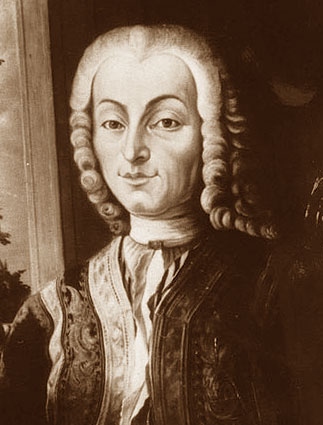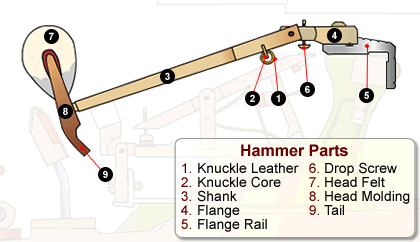
What do you think of when the word hammer comes to mind?
- A tool?
- Rapper/dancer, MC Hammer?
- A piano?
You may be thinking, “What’s a hammer have to do with a piano?”
Good question.
Hammers are mechanisms inside the keyboard that play a crucial role in its structure and sound. At times, we can forget about them because they are inside the instrument, but they are still an essential part of this big wood contraption. Without the hammers, it would not be able to produce the sound we hear today.
Before the piano was invented, the harpsichord was the main keyboard instrument. It produced sounds by hitting keys, which would strike a device called “jacks” that were in the harpsichord. The strings would be plucked in order to make sound, and a “jack rail” would then control how many strings were plucked at a time. This was what adjusted the volume.
Here’s a simple demonstration of how the jack works:

The piano eventually came into play in the 1700’s. It was invented by Bartolomeo Cristofori in Italy because many people were unsatisfied with the lack of control they had over the volume of the harpsichord. Cristofori switched the plucking mechanism for a hammer in the 1700’s. He developed an “escapement” mechanism, which allowed a hammer to fall after hitting the strings, as well as a dampening mechanism on the jack so that the strings would not sound when it was not being hit. His invention completely changed the sound of the keyboard instrument. It seems like a very minute detail- silencing the string; however, it makes a big difference. There’s a less abrupt sound, and a nice resonation. All of these characteristics makes the instrument more appealing to the ear.
Cristofori also developed another mechanism that improved the striking action. He used what he named, a “slide-slip.” The device (which was activated by a hand stop) would shift the mechanism so that it would only hit one string instead of three. This is where the soft pedal or una corda originated from.
The head of the hammer was also covered by a piece of felt. This allowed the tool to be protected, and not clash into the strings while keys were played. They were originally covered with layer of leather; however it was changed, most likely because it wasn’t fully developed until the mid 1800’s. The felt material allowed pianists to produce a softer sound, compared to the harpsichord, which was sharper and more abrupt. It had larger gradations in dynamics, which previous keyboard instruments did not have. As the felt quality gradually increased over time, modern pianos developed better tone, which gave room for more expression.

So why are the hammers in the piano even that important? Is it even considered a technology? I would say so! The development of the hammer revolutionized the keyboard instrument. Before, pianists had no control over the volume at which they could play. As a pianist, that would have really bothered me, because the most important thing to have is a large range in dynamics. With the earlier keyboard instruments, the volume could only be controlled with the jack rail, and that still didn’t give much range in dynamics. The articulation of fingers was essentially the only thing that could control the sound and tone. It didn’t matter how much weight you put into the keys.
With the development of the hammer mechanism, pianists were able to change the sound and volume with the weight of their arms. This allowed them to produce a much bigger range of dynamics. It’s the reason why we are able to play a vast range of fortes and pianos today.

